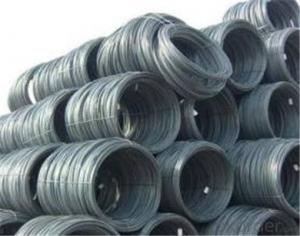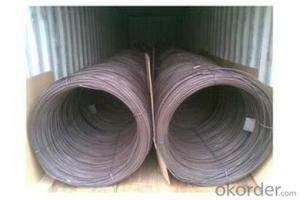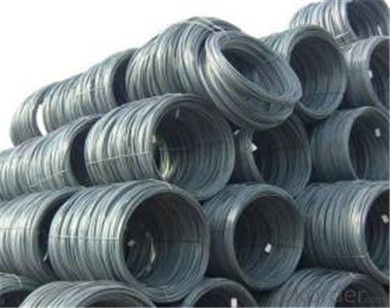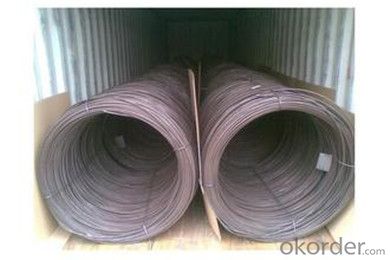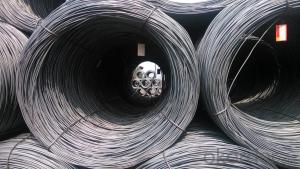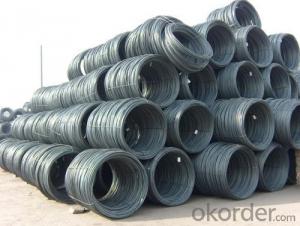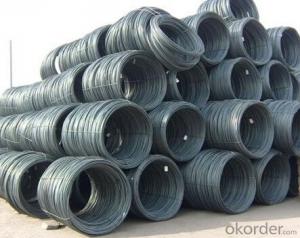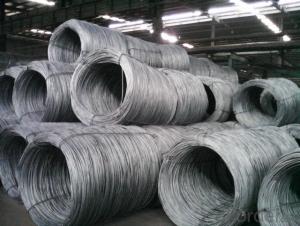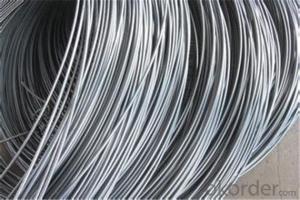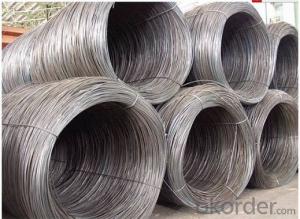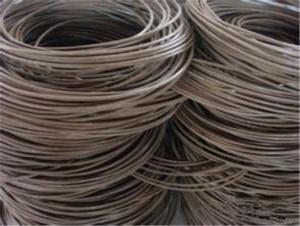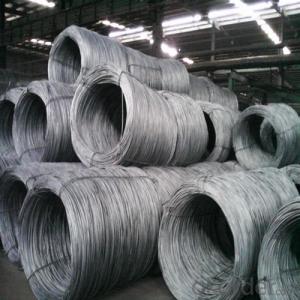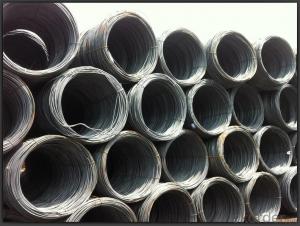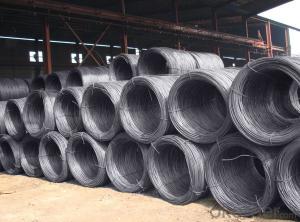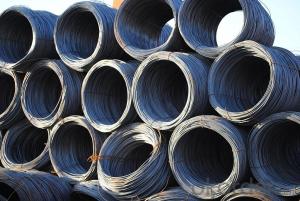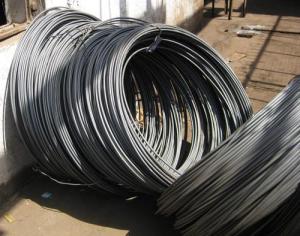SAE1006B Hot Rolled Steel Wire Rod 6.5mm with in China
- Loading Port:
- Tianjin
- Payment Terms:
- TT OR LC
- Min Order Qty:
- 500 m.t.
- Supply Capability:
- 45555555 m.t./month
OKorder Service Pledge
OKorder Financial Service
You Might Also Like
Specification
Description of wire Rod:
Our company is recognized by ISO9001:2008
1. hot rolled wire rod
2. material: Q195-235
Festures of wire Rod:
1. Drawn wire specialist, your wire rod solution
2. ISO9001 Certified Mill &SGS
3. Feature: machinability, high hardness, toughness, corrosion resistant
Specifications of wire Rod:
Product | steel wire rod |
Standard | AISI, ASTM, BS, DIN, GB, JIS |
Material/steel grade | Q195-Q235,SAE1006, SAE1008, SAE1010, SAE1018, SAE1020 or according to customers requirements |
Wire Gauge | 5.5-12mm |
Coil weight | 1.8-2.1mts |
MOQ | 25MT |
Delivery Time | 15-30 days after receipt of L/C or deposit by T/T |
Packing | In coil and load in container, if large quantity, by bulk vessel; Can be packed as customers' special requirements |
Payment terms | 1).100% irrevocable L/C at sight. |
Application | widely used in machinery parts, manufacturing industry, electronics industry, metal tools and others |
Images of wire Rod:
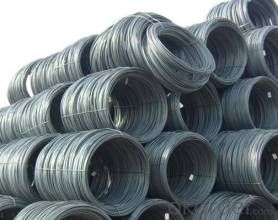
FAQ:
1. What is your package?
Packing situation: standard seaworthy packing or as customer required.
2. How long is the lead time?
Delivery time: 45 days after order confirmed.
3. What payment term do you accept?
Payment: T/T or L/C at sight.
- Q: What are the major steel wire rod consuming industries?
- The major steel wire rod consuming industries include construction, automotive, machinery, and electrical appliances.
- Q: How is steel wire rod used in the production of wire for wire rope slings?
- Steel wire rod is used in the production of wire for wire rope slings by being first drawn through a series of dies to reduce its diameter and increase its length. This process, known as wire drawing, helps to enhance the tensile strength and flexibility of the wire. The resulting wire is then twisted and braided together to form the strands of the wire rope sling, providing it with the necessary strength and durability for lifting heavy loads safely and reliably.
- Q: How is steel wire rod used in the oil and gas industry?
- Steel wire rod is commonly used in the oil and gas industry for various applications. It is primarily used for the manufacturing of wirelines, which are used to lower downhole tools and equipment into oil and gas wells. Wirelines made from steel wire rod are strong, durable, and resistant to corrosion, making them ideal for withstanding the harsh conditions found in oil and gas wells. Additionally, steel wire rod is also used for reinforcing and strengthening concrete structures in oil and gas facilities, such as pipelines, tanks, and platforms, to ensure their structural integrity and longevity.
- Q: How does the electrical conductivity of steel wire rod vary with different wire drawing processes?
- The electrical conductivity of steel wire rod typically decreases with each wire drawing process. This is because the mechanical deformation during the drawing process causes the crystal structure of the steel to become more elongated and aligned, resulting in increased resistance to electrical flow. Additionally, impurities and oxides on the surface of the wire rod can be further compacted during wire drawing, further reducing electrical conductivity.
- Q: What are the different types of steel wire rod finishes for improved surface hardness?
- Some of the different types of steel wire rod finishes for improved surface hardness include hot rolled, cold drawn, and galvanized finishes.
- Q: How is steel wire rod used in the manufacturing of fishing lines?
- Steel wire rod is commonly used in the manufacturing of fishing lines due to its strength, durability, and flexibility. Fishing lines made from steel wire rod can withstand the tension and pressure exerted by large fish, making them ideal for deep-sea and heavy-duty fishing. To create fishing lines, steel wire rod is first drawn into a thin and fine wire. This wire is then coated with a layer of protective material, such as nylon or polymer, to enhance its resistance to corrosion and provide smoothness for casting and reeling. The use of steel wire rod in fishing lines offers several advantages. Firstly, the high tensile strength of the steel wire ensures that the fishing line can withstand the pulling force of a struggling fish, reducing the risk of breakage. Additionally, the durability of steel wire rod makes the fishing line less prone to wear and tear, increasing its lifespan and reliability. Moreover, steel wire rod possesses excellent flexibility, allowing the fishing line to be easily cast and reeled in. This flexibility enables anglers to cast their lines accurately and with ease, increasing the chances of a successful catch. Furthermore, the flexibility of steel wire rod allows the fishing line to absorb sudden shocks or jerks, preventing it from snapping under pressure. In summary, steel wire rod is an essential component in the manufacturing of fishing lines due to its strength, durability, and flexibility. Its properties enable fishing lines to withstand the tension exerted by fish, ensuring a higher success rate in catching fish while also increasing the lifespan and reliability of the fishing line.
- Q: What are the factors that affect the pricing of steel wire rod?
- There are several factors that can affect the pricing of steel wire rod. 1. Raw material costs: One of the main factors is the price of the raw materials used to produce steel wire rod. This includes the cost of iron ore, coal, and other minerals needed in the steelmaking process. Fluctuations in these raw material prices can directly impact the pricing of steel wire rod. 2. Demand and supply: The demand for steel wire rod plays a crucial role in determining its price. When demand is high, prices tend to increase, and when demand is low, prices may decrease. Similarly, the supply of steel wire rod, influenced by factors such as global production capacity, can impact its pricing. 3. Energy costs: Steel production requires a significant amount of energy. Therefore, fluctuations in energy prices, such as the cost of electricity and fuel, can affect the overall production costs of steel wire rod and subsequently its pricing. 4. Production and labor costs: The cost of producing steel wire rod is influenced by various factors, including labor costs, machinery maintenance, transportation, and overhead expenses. These costs can vary across different regions and countries, impacting the final pricing of the product. 5. Government regulations and trade policies: Government regulations, taxes, tariffs, and trade policies can have a significant impact on the pricing of steel wire rod. Trade barriers and import/export duties imposed by governments can affect the cost of importing or exporting steel wire rod, ultimately impacting its price in the market. 6. Market competition: The level of competition in the steel wire rod market can also affect its pricing. When there are many suppliers or alternatives available, prices may be more competitive. Conversely, if there is limited competition, prices may be higher. It is important to note that these factors are interconnected and can fluctuate over time. Therefore, the pricing of steel wire rod is highly dynamic and subject to various market forces and external influences.
- Q: How is steel wire rod used in the manufacturing of wire netting?
- Steel wire rod is used in the manufacturing of wire netting as the primary material. It is drawn through a series of dies to reduce its diameter and increase its length, resulting in a thin and elongated wire. This wire is then woven or welded together to form the mesh structure of the wire netting. The high tensile strength and durability of steel wire rod make it an ideal choice for constructing wire netting, which is commonly used for fencing, screening, and reinforcement purposes in various industries.
- Q: What are the main factors affecting the strength of steel wire rod?
- The main factors affecting the strength of steel wire rod include the composition of the steel, the manufacturing process, and the heat treatment applied to the wire rod.
- Q: What are the different types of steel wire rod surface finishing processes?
- There are several different types of steel wire rod surface finishing processes, including pickling, phosphating, galvanizing, and coating. Pickling involves removing impurities and scale from the surface of the wire rod using an acid solution. Phosphating applies a thin layer of phosphate coating to improve corrosion resistance. Galvanizing involves coating the wire rod with a layer of zinc to protect against rust and corrosion. Coating processes, such as powder coating or painting, apply a layer of protective material to enhance durability and aesthetics.
Send your message to us
SAE1006B Hot Rolled Steel Wire Rod 6.5mm with in China
- Loading Port:
- Tianjin
- Payment Terms:
- TT OR LC
- Min Order Qty:
- 500 m.t.
- Supply Capability:
- 45555555 m.t./month
OKorder Service Pledge
OKorder Financial Service
Similar products
Hot products
Hot Searches
Related keywords
